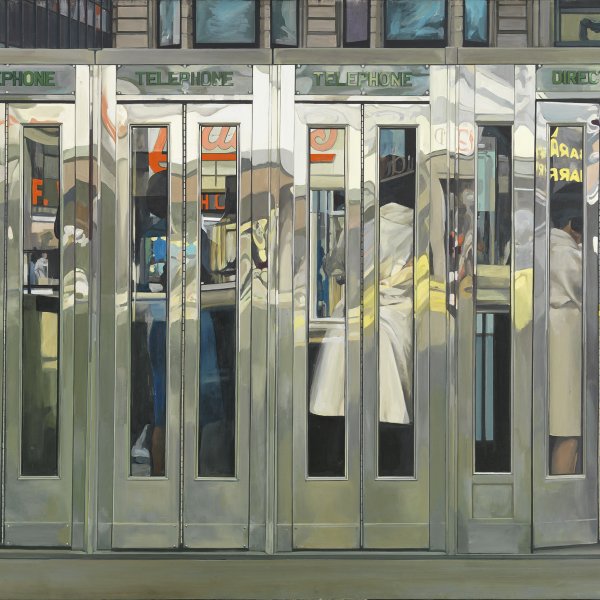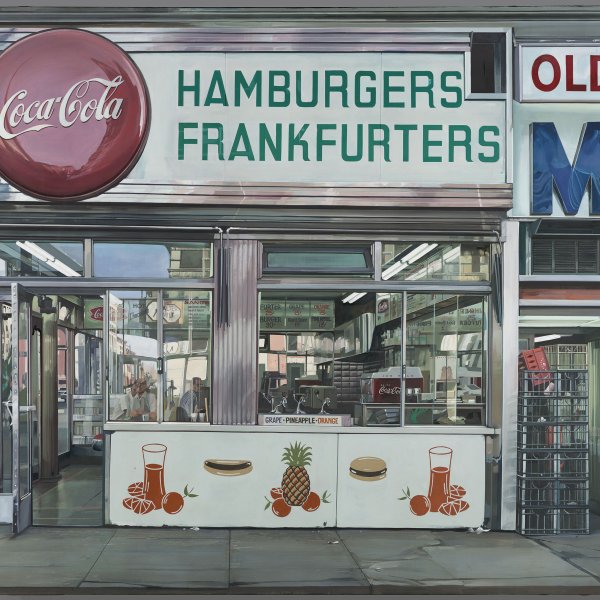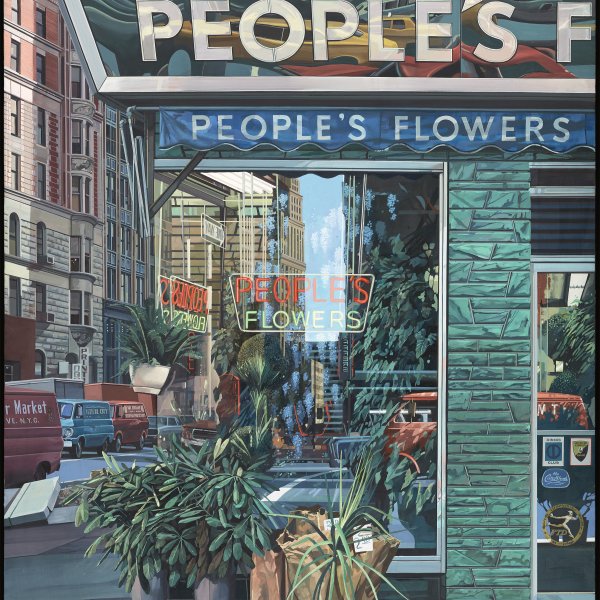Richard Estes
Kewanee, 1932
Richard Estes was one of the founders of Hyperrealism, also called Photorealism. This trend in painting, which emerged in the United States at the end of the 1960s, was characterised by an interest in capturing reality using a photographic image as a model and by the aim of achieving a sharpness of focus that was absolute and more precise than that of the human eye.
Estes studied at the Art Institute of Chicago from 1952 to 1956 and, after completing his training, began to work for various advertising agencies and publishing companies. In 1959 he moved to New York, where he worked as an illustrator and designer and became acquainted with the world of photography. When he had saved enough money, he stopped working and travelled around Spain in 1962. In 1967 he showed some of the works executed during his trips to Allan Stone, whose gallery staged his first one-man show in 1968. In barely three years his work became known in the United States and Europe.
Manhattan became Estes’ favourite theme and over time other cities of the world were also depicted in his works. Although he admired Edward Hopper, he executed urban landscapes of a different nature, as they avoided night scenes and were devoid of narrative and emotional elements. On the contrary, he seeks to capture times of day when the light is brightest, and is especially attracted by metal surfaces, glass and mirrors, revelling in the deformed images of their reflections. Although they greatly resemble photographic views of the world, and Estes bases his compositions on photographs, he does not use them to imitate reality but to reconstruct it with a much sharper focus than direct observation allows.
The artist currently lives and works in New York.
Estes studied at the Art Institute of Chicago from 1952 to 1956 and, after completing his training, began to work for various advertising agencies and publishing companies. In 1959 he moved to New York, where he worked as an illustrator and designer and became acquainted with the world of photography. When he had saved enough money, he stopped working and travelled around Spain in 1962. In 1967 he showed some of the works executed during his trips to Allan Stone, whose gallery staged his first one-man show in 1968. In barely three years his work became known in the United States and Europe.
Manhattan became Estes’ favourite theme and over time other cities of the world were also depicted in his works. Although he admired Edward Hopper, he executed urban landscapes of a different nature, as they avoided night scenes and were devoid of narrative and emotional elements. On the contrary, he seeks to capture times of day when the light is brightest, and is especially attracted by metal surfaces, glass and mirrors, revelling in the deformed images of their reflections. Although they greatly resemble photographic views of the world, and Estes bases his compositions on photographs, he does not use them to imitate reality but to reconstruct it with a much sharper focus than direct observation allows.
The artist currently lives and works in New York.






